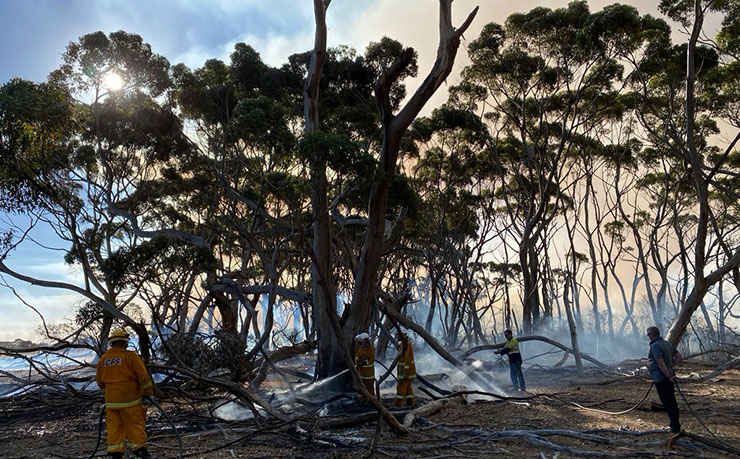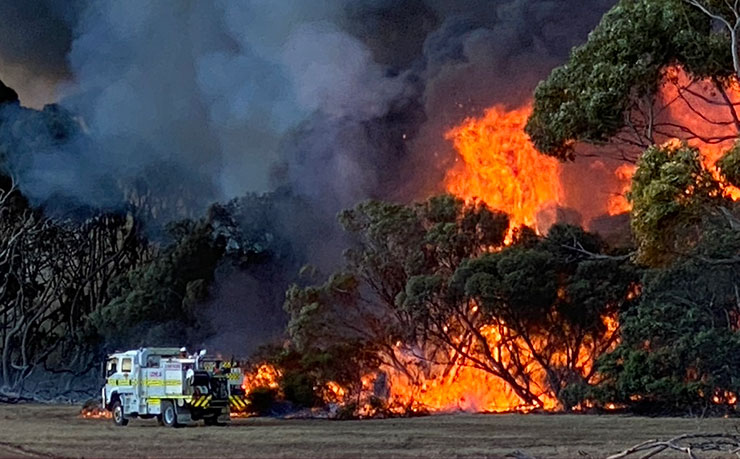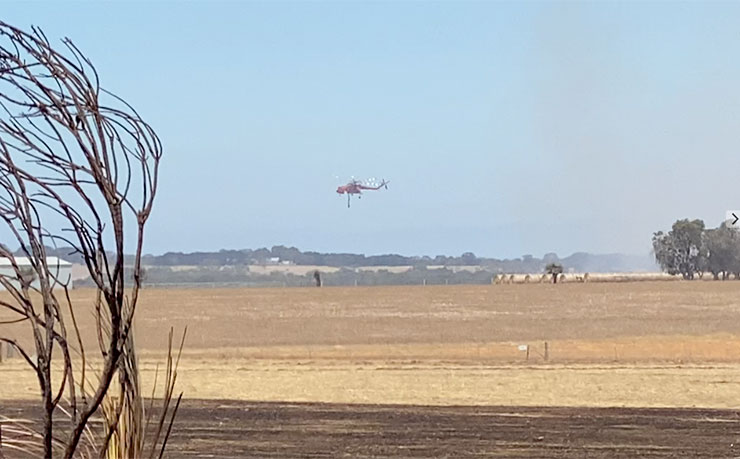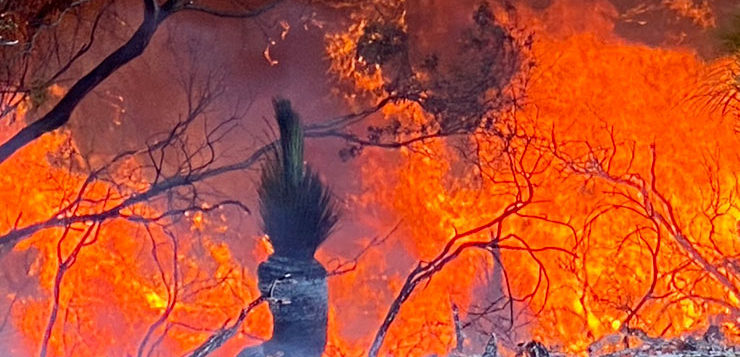DON’T MISS ANYTHING! ONE CLICK TO GET NEW MATILDA DELIVERED DIRECT TO YOUR INBOX, FREE!
The political firestorm lit by Barnaby Joyce and fanned by the Government and conservative media commentators around ‘Greens’ preventing hazard reduction burns has obviously been well and truly debunked (and extinguished). But prescribed burns won’t stop wildfires in the first place. Dr Byron Lamont a Distinguished Professor Emeritus in Plant Ecology with Curtin University, and Adjunct Research Fellow Dr Tianhua He explain.
The knee-jerk response to the devastating wildfires that have raged in Australia this summer has been for some to demand a more intensive program of prescribed/controlled burning before summer begins. But what are they and do they even work?
Prescribed burns are fires created by fire management authorities to reduce fuel in an attempt to stop the advance of future possible wildfires.
This is an interesting turnaround, as usually these authorities are accused by some ‘green’ groups and health authorities of burning the vegetation too frequently, at the wrong time of year, and creating extra greenhouse gases and smoke over populated areas.
Unfortunately, areas that recently received a prescribed burn have offered little resistance to the advance of current wildfires. The fires have just passed straight through them. But why?

Current practices of prescribed fires essentially burn the ground flora, the shrubs, herbs, and creepers. At most, heat from the ground might scorch the upper canopy, and they tend to be patchy. These are called surface fires.
But wildfires burn everything. They create their own inferno.
Their greatest heat is produced from fuel in the tree canopy. The convective currents created by the firestorm spray embers up to kilometres from the fire front – they simply drop onto or over areas that have received prescribed burns.
These are called crown fires.
The aim of fire managers is to avoid crown fires during prescribed burning for fear that the fire gets out of control and will go far beyond the area intended to be burnt.

Controlled fires are only meant to stop the odd cigarette thrown out of a car window from starting a fire, or lightning strikes igniting the ground flora. They may not even achieve those goals, because scorching the trees above can lead to considerable leaf drop and build-up of litter that increases flammability and deters germination and seedling establishment.
Nature conservation was never one of its overt goals, though research by these same fire management authorities claims that no harm is done. And because they always fall behind in their prescribed burning program, independent ecologists are usually satisfied that species diversity does not appear to be harmed.
However, they often introduce a new danger. Along transport routes, firebreaks, and access tracks, the burnt edges give access to exotic weeds that blow in, especially grasses and herbs from South Africa and Europe.
These weeds germinate far more readily than native plants, they are more flammable than the native plants and once they have invaded, they are there to stay.
So, on grounds that they do not stop the progress of wildfires and indeed may lead to weed encroachment, increasing the rate of prescribed burning is not an answer to the current wildfire problem.
The only effective deterrent is areas that have recently experienced a wildfire, as no combustible fuel remains. This inhibitory effect might last for five or so years when the vegetation can carry a fire again.

Ironically, the Australian flora has experienced wildfires of the current type for many millions of years.
It is adapted to wildfires, not prescribed burns.
Thus all eucalypts, paperbarks, she-oaks, and banksias release their seeds only when their canopies are burnt and there is massive seedling recruitment in the next wet season that ensures the vegetation recovers.
Have no doubt, the vegetation will recover strongly. But with diminishing effective rain it will be unusually slow.
The only exceptions are that rainforests and subalpine vegetation are now experiencing fires that historically they have not – their margins are being burnt away, because they are rarely adapted to fires of any sort.
So these special vegetation types with their unique floras will contract with the increased onslaught.
Ultimately, we are guests in the world’s most flammable continent and have to learn to live with that fact. The Aboriginal inhabitants learned to but we have not.

In the long term, prescribed burns do not achieve the goal of protecting life and property. And they do little to enhance conservation of species diversity.
The side effects of climate change will be a period of intensified fire as mean temperatures rise and dry fuel increases. This will be followed later by less intense fire as the fuel load gradually reduces in the presence of lower rainfall.
As old-growth forests remain fire-free so they, in turn, become less combustible.
In the meantime, Australians should expect the worst and plan for more devastating wildfires.
BE PART OF THE SOLUTION: WE NEED YOUR HELP TO KEEP NEW MATILDA ALIVE. Click here to chip in through Paypal, or you can click here to access our GoFundMe campaign.
Supporting information
• Milberg, P. and Lamont, B.B. 1995. Fire enhances weed invasion of roadside vegetation in southwestern Australia. Biological Conservation 2, 45-49.
• He T, Lamont BB, Downes KS. 2011. Banksia born to burn. New Phytologist 191, 184–196.
• He, T, Lamont BBand Pausas JG (2019) Fire as a key driver of Earth’s biodiversity. Biological Reviews 94, 983 – 2010.
• Fireproneness of old growth forests.
• The authors thank Dr Juli Pausas (Centro de Investigaciones sobre Desertificación, Valencia, Spain) for comments on the manuscript.
Donate To New Matilda
New Matilda is a small, independent media outlet. We survive through reader contributions, and never losing a lawsuit. If you got something from this article, giving something back helps us to continue speaking truth to power. Every little bit counts.




